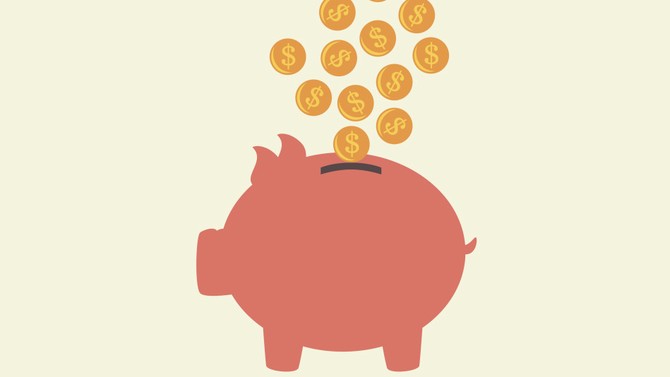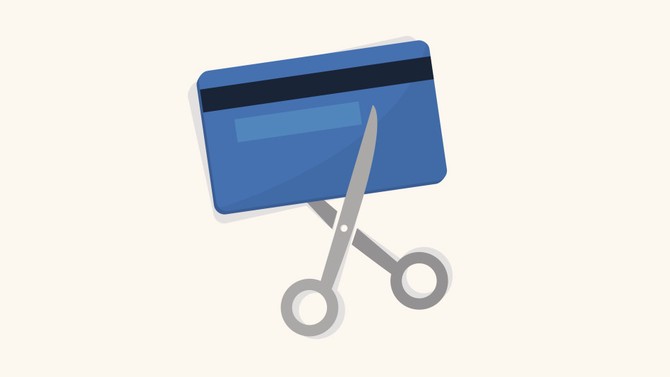Suze Orman's 5 Money-Saving Steps for Beginners
Discover how to ramp up your savings and keep yourself in great financial shape.
By Suze Orman

Photo: Sean Lee Davies
Here's a simple truth about money: The more you save, the happier you'll be, as a fully loaded emergency fund frees you from middle-of-the-night what-ifs. A solid retirement plan is a promise now to provide for yourself later.
But here's another truth: Saving consistently is hard. It's all about delayed gratification, and our brains aren't wired for that. As ample academic research shows, most of us would rather have $1 to spend today than wait to reap the growth from that same $1 over time.
Still, saving doesn't have to mean deprivation. Seven in ten of the multimillionaires queried in a 2014 survey get more pleasure from investing and saving than spending. So think like a millionaire and make this your mantra: Saving feels better than spending. It's not just your wallet at stake—it's your happiness!
But here's another truth: Saving consistently is hard. It's all about delayed gratification, and our brains aren't wired for that. As ample academic research shows, most of us would rather have $1 to spend today than wait to reap the growth from that same $1 over time.
Still, saving doesn't have to mean deprivation. Seven in ten of the multimillionaires queried in a 2014 survey get more pleasure from investing and saving than spending. So think like a millionaire and make this your mantra: Saving feels better than spending. It's not just your wallet at stake—it's your happiness!

Photo: studiogstock/iStock/Getty Images
1. Start Now
Two factors determine your future savings: the amount of money you put away today and how long it has to grow. The earlier you start, the less you need to set aside, as you can see in these retirement fund scenarios:
Age 25
If your annual salary is $40,000: 15%
If your annual salary is $65,000: 9%
Age 40
If your annual salary is $40,000: >25%
If your annual salary is $65,000: 11.4%
Age 55
If your annual salary is $40,000: >25%
If your annual salary is $65,000: >25%
From Employee Benefit Research Institute
Age When You Start Saving
Age 25
If your annual salary is $40,000: 15%
If your annual salary is $65,000: 9%
Age 40
If your annual salary is $40,000: >25%
If your annual salary is $65,000: 11.4%
Age 55
If your annual salary is $40,000: >25%
If your annual salary is $65,000: >25%
From Employee Benefit Research Institute

Photo: obuart/iStock/Getty Images
2. Have a Plan
Which group would you rather be in?
Percentage of Americans who say they're making excellent or good progress toward their savings needs.
With a Plan: 57%
Without a Plan: 22%
Percentage who say they're on track with their emergency savings.
With a Plan: 82%
Without a Plan: 48%
From 2015 America Saves Week Survey
Percentage of Americans who say they're making excellent or good progress toward their savings needs.
With a Plan: 57%
Without a Plan: 22%
Percentage who say they're on track with their emergency savings.
With a Plan: 82%
Without a Plan: 48%
From 2015 America Saves Week Survey

Photo: boggy22/iStock/Getty Images
3. Automate
The best way to defend against the urge to spend? Take the decision out of your hands by setting up systems that will automatically transfer money into your savings account on a regular schedule. A company retirement plan is a great example: You should have money automatically deposited from your paycheck into your 401(k). You can also set up contributions to an IRA; call the financial institution that handles the account and ask for the paperwork to set up free automatic transfers from your bank.

Illustration: Gillian MacLeod
4. Create Separate Accounts for Separate Goals
Each of your financial goals deserves its own account. If it's a bank or credit union account you access online, I recommend giving it a name. Labeling accounts—Emergency, Home Renovations, Car Down Payment—keeps the ultimate goal in sight and can help you stay committed.

Photo: milo827/iStock/Getty Images
5. Cut It Out
I've heard it a million times: "Suze, after paying the bills, we have no money left to save!" But there are always places you can trim:
Gifts.
Spending on others when you're not giving enough to yourself is disrespectful. Give loved ones the gift of your time: Babysit, help with a chore and so on.
Services you don't use.
Case in point: the gym you joined but go to only once a month. And do you really need all those streaming services for music and TV?
Dining out/going out.
Tote up what you spend each month on dining out (include lunch you buy at work) and entertainment—and then start whittling. That daily double mochaccino will never be as sweet as money in the bank.
Suze Orman's latest book is The Money Class: How to Stand in Your Truth and Create the Future You Deserve.
Spending on others when you're not giving enough to yourself is disrespectful. Give loved ones the gift of your time: Babysit, help with a chore and so on.
Case in point: the gym you joined but go to only once a month. And do you really need all those streaming services for music and TV?
Tote up what you spend each month on dining out (include lunch you buy at work) and entertainment—and then start whittling. That daily double mochaccino will never be as sweet as money in the bank.
Suze Orman's latest book is The Money Class: How to Stand in Your Truth and Create the Future You Deserve.
From the July 2015 issue of O, The Oprah Magazine

